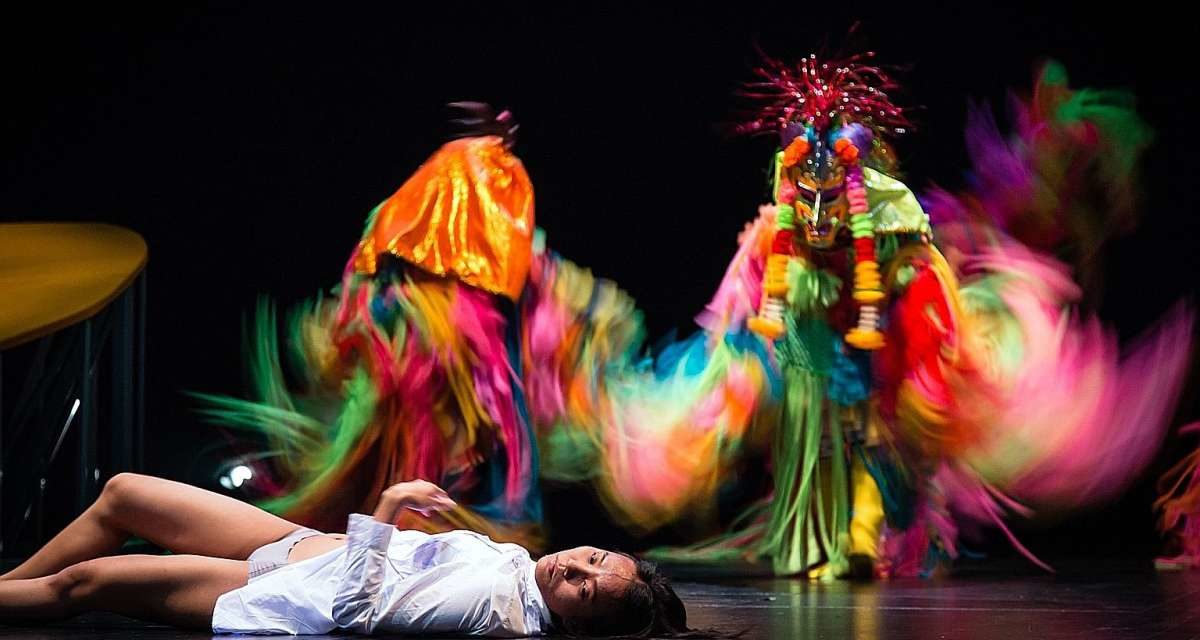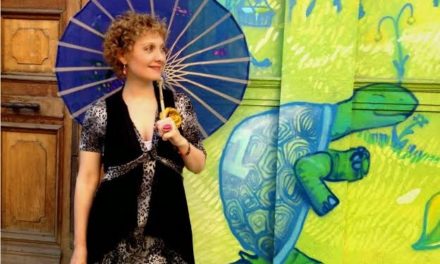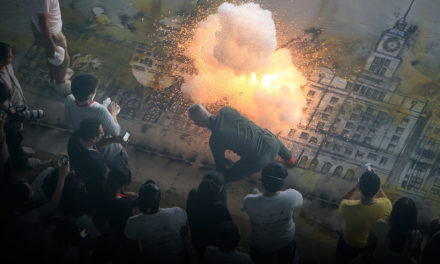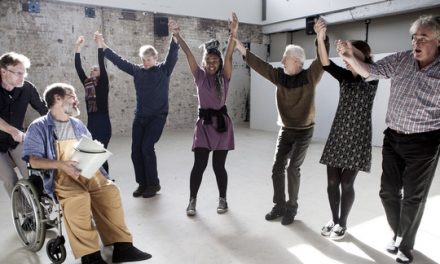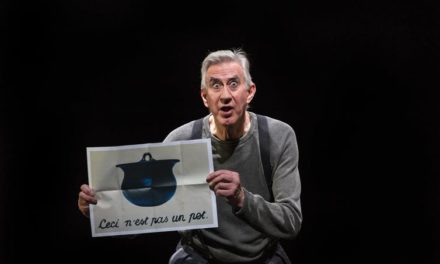Art that Moves is an occasional series where we ask artists and other creative workers to reflect on artworks, performances or events that were personally important to them.
Lim How Ngean (Ph.D.) is a performance-maker, dramaturg and dance researcher. In recent years he has dramaturged dances for choreographers such as Daniel Kok, Joavien Ng, Kuik Swee Boon and Ming Poon (Singapore), Pichet Klunchun (Thailand), and Amrita Performing Arts Group (Cambodia). He also initiated the Asian Dramaturg’s Network (ADN), with its inaugural symposium in Singapore, April 2016. The ADN will be holding a Satellite Symposium in Adelaide, Australia, between 1 – 2 October 2017, as part of OzAsia Festival.
Ahead of the Symposium in Adelaide, ArtsEquator caught up with How Ngean to share his journey towards founding ADN.
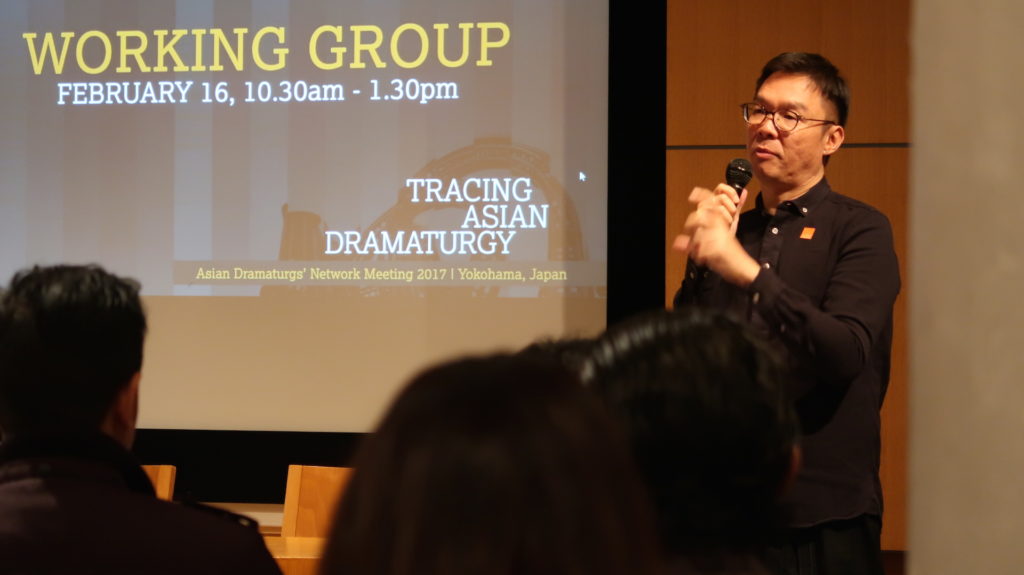
ArtsEquator (AE): Morning How Ngean! Welcome to Art That Moves, an ArtsEquator series in which we talk to arts makers about a work of art, experience, person, encounters that moved them into the direction of their practice. In 2016, you founded the Asian Dramaturgs’ Network. Prior to that, you were a performer, director, and journalist. Can you tell us what brought you to dramaturgy?
Lim How Ngean (HN): I have had about more than twenty years of collective experience in performing, and various aspects of performance production, after which I did my Masters on contemporary dance followed by my PhD. I knew that the accumulated experiences I had should be put to SOME use … and I knew I would never be an academic! So, the opportunity came when Tang Fu Kuen (present Artistic Director of Taipei Arts Festival) suggested I try out dramaturgy. My first attempt was actually a golden opportunity, working on a workshop performance between Malaysian dancer January Low and Cambodian dancer Hun Pen, presented by Esplanade da:ns Festival in 2008. From there I realized I liked working with performers and performance-makers in creating something, or toward something.
AE: Had you experienced working with a dramaturg yourself as a performer and director?
HN: I remember Krishen Jit (Director, Five Arts Centre, Malaysia) used that term in the early 2000s … back then my interest was not piqued by the word. I am sure my early performance years with director Ong Keng Sen (Artistic Director of TheatreWorks Singapore) would also have brought up dramaturgy but I was young and silly, as we tend to be.
AE: So your first real experience in practice was straight into the deep end – actually working as a dramaturg – with January and Hun Pen, no less. Was that as terrifying as it sounds?
HN: To be fair Fu Kuen was very supportive. When he mooted the idea, he had already worked with Jan and Pen for a while. We then had many conversations and discussions. I think Fu Kuen had the confidence to push me to do it because he liked my line of questioning when we talked about the project. Well, that’s what I would like to think he felt anyway! And then, of course, Esplanade Singapore’s dance programmer, Faith Tan took a leap of faith, asking me to dramaturg her commissions at da:ns Festival (Pichet Klunchun’s Black and White in 2011). And the learning curve grew and grew and grew…
AE: You’ve said that academia was not for you. Is being a dramaturg a passageway between your two areas of experience and knowledge: performance and theory? Did these equip you to ask deep questions?
HN: Not sure about “deep questions” … but yes, I loved asking questions; that’s a trait I developed in my first job, as a journalist.
AE: The KPC[1] instinct?
HN: I actually hate using the term KPC in dramaturging. KPC implies a certain looseness, a certain “flabbiness” in curiosity. If anything, dramaturgy has taught me to question with rigor and discipline. KPC also implies too fluid a relationship between dramaturg and maker. Sociality is important but the dramaturg/maker relationship is not a BFF one!
AE: I think you’ve given a great description of the dramaturgical relationship in layman terms!
HN: Haha, hopefully.
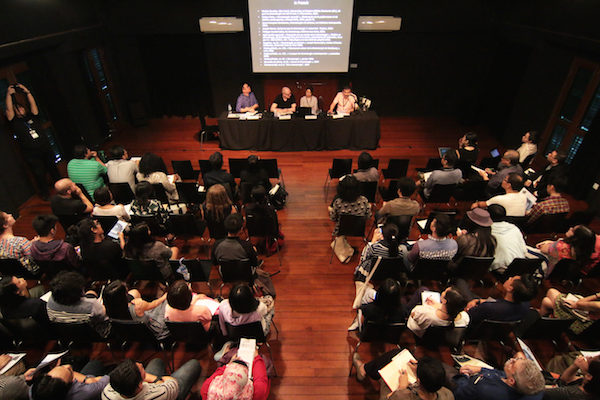
AE: Who is this “maker” you speak of?
HN: In the most conventional (and accepted) terms, theatre-maker = director and dance-maker = choreographer; making implies the act of creating a performance. Of course, there are many other valid makers – playwright, designers, they all “make”. I guess in the traditional sense, the dramaturg first develops the artistic or critical relationship with director or choreographer.
AE: From your first experience, with Fu Kuen’s support in 2008, to you founding the Asian Dramaturg Network in 2016. Tell us briefly why you felt a network was needed.
HN: On a very personal level, I really wanted to know if there were any dramaturgs in the region and if performance makers in the region think of dramaturgy? That’s the short version.
AE: And was there? What did your first event, the Asian Dramaturgs’ Network Symposium 2016, set out to do?
HN: I knew there was quite an established community of Japanese dramaturgs from my past research, but what was amazing about the first was the interest amongst artists and makers about dramaturgy. Not many of us call ourselves bona fide dramaturgs for many reasons, and the biggest one is out of economic necessity. Most production budgets do not include a dramaturg, but all performances have dramaturgy in their process, even if artists and makers may never use the word specifically. Even back in the mid-1990s, TheatreWorks had dramaturgs working on their large-scale shows. Robin Loon was Keng Sen’s dramaturg, for instance. Fu Kuen was unofficially acting as dramaturg for Goh Ching Lee when she helmed the Singapore Arts Festival, helping and advising Ching Lee to curate the festival in a coherent and cohesive manner. All this happened in the 1990s. Today many producers also act as dramaturgs. Helly Minarti, a dance exponent from Indonesia, produces, dramaturgs, curates. In KL one of the most underrated dramaturgs would be Marion D’Cruz (Director and Choreographer, Five Arts Centre) when she produced for Krishen Jit. As an artist in her own right, she gave critical feedback to Krishen of his rehearsals, performances. So, in short, many of us play dramaturg without using the term.
AE: So, the network offered structure and, perhaps nomenclature, while showing that the practice was already present in Asia?
HN: Indeed – way back to the Natyasastra – as an example. As to nomenclature, we are discovering many ways of saying ‘dramaturgy’ without using the term. It’s so fraught with Western notions of the European dramaturg specifically dealing with texts. But it is the easiest way to call it – for now. I want to add that the ADN would never have happened without Centre 42, and of course, the much-needed funding support from Japan Foundation Asia Center. Centre 42 have been supportive in various ways from administration help to critical feedback in our symposiums. It is indeed a very fine synergy between ADN and Centre 42 as they are seen as an intermediary arts body championing process, discourse, and works-in-progress activities. In a climate where material production is a feverish aim for most arts companies, Centre 42 really helps to shift the gears to process events.
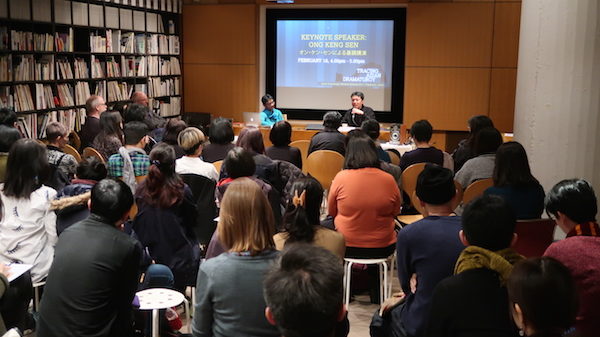
AE: It’s only a year old but you’re about to organize your 3rd event, in Adelaide. What are the principal aims of the ADN now and how does the Adelaide event fit into that plan?
HN: Most important is the exchange of ideas, practices, and theories on dramaturgy that have surfaced in this region with cultural and social specificities. We want to get discussions going about dramaturgy and develop the networks of people who are interested in it. Adelaide is a great opportunity to involve Australian artists, as the idea of dramaturgy took on Australian significance when dramaturgs such as Peter Eckersall and David Pledger championed it in the early 2000s. Here’s a good read.
AE: The ADN Meeting in Adelaide is titled ‘Dramaturgies of the Cultural and Social’ – does it imply an extension of dramaturgical thinking beyond the stage?
HN: Yes indeed. At our last symposium in The Performing Arts Meeting (TPAM) in Yokohama in February, we found that the concerns of makers and dramaturgs went beyond the individuated performance projects. Questions and discussions on the community, the social and cultural came into play for a lot of us. Social movements through arts is definitely a topic that is close to ADN’s heart.
One of the principal concerns of the dramaturg is the spectator/audience’s relationship with the performance. So, by investigating the social and the cultural, we extend to the community at large as spectators and audience. Also, the Adelaide symposium is our first attempt to connect with Australian artists and dramaturgs to widen the network of Asia to include the Asia Pacific of course.
AE: Tell us some of the top speakers/topics to look out for at the event?
HN: All of them! Seriously it’s a small symposium with very focused talks and roundtables. Dr. Charlene Rajendran of National Institute of Education in NTU and Australian dramaturg, curator and arts activist David Pledger will give keynotes. We are fortunate to have Sydney-based Annette Shun Wah of Contemporary Asian Australian Performance organization in our roundtable. Dramabox’s Artistic Director, Kok Heng Leun will also be with us. We also have Rachael Swain from the critically acclaimed Australian indigenous company Marrugeku to reflect on the public and the social in arts.
AE: Indeed it does. Any final words on ADN’s future?
HN: We’re planning an exciting symposium-cum-workshop in Yogyakarta in 2018. It’ll be a different encounter, as we want to introduce active workshops/masterclasses on many aspects of dramaturgy.
AE: Great. Good luck with Adelaide! Thanks! Thank you for sharing with our readers!
[1] “Kay Poh Chee“: busybody
This post originally appeared on Arts Equator on September 11, 2017 and has been reposted with permission.
This post was written by the author in their personal capacity.The opinions expressed in this article are the author’s own and do not reflect the view of The Theatre Times, their staff or collaborators.
This post was written by Arts Equator.
The views expressed here belong to the author and do not necessarily reflect our views and opinions.

